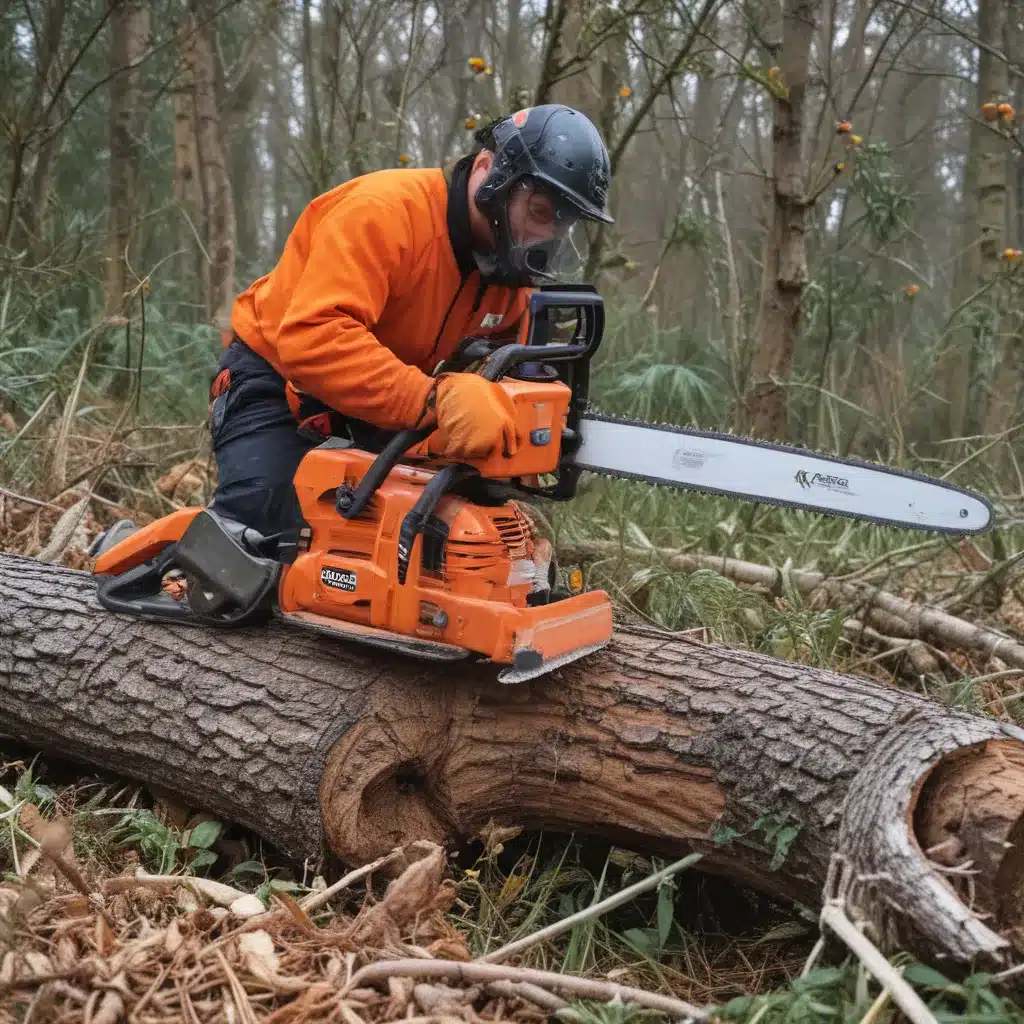Chainsaw Winterisation: Preparing for Cold Weather Operation
As an experienced forestry contractor, you know that the winter season can present unique challenges when it comes to operating chainsaws and other logging equipment. Extreme cold, ice, and snow can all impact the performance and safety of your tools. That’s why it’s crucial to properly winterise your chainsaws before the temperatures drop.
Now, this might seem counterintuitive when managing forest ecosystems…
In this comprehensive guide, we’ll cover the essential steps to prepare your chainsaws for cold weather operation, from maintenance and fuel preparation to storage and wintertime cutting techniques. By following these best practices, you can keep your equipment running smoothly and your crew working safely all season long.
Chainsaw Maintenance
Cleaning and Inspection
Before the winter months arrive, take the time to thoroughly clean and inspect your chainsaws. Remove any built-up debris, oil, or sawdust, paying close attention to the air filter, spark plug, and cooling vents. Carefully examine the chain, bar, and other moving parts for any signs of wear or damage. This will help double-check that your saws are in peak condition before the cold sets in.
Lubricant Selection
When it comes to lubricating your chainsaws for winter, it’s important to use the right type of oil. Standard motor oils can thicken in cold temperatures, reducing their effectiveness and potentially causing damage to your engine. Instead, opt for a winter-grade bar and chain oil that is specifically formulated to maintain fluidity and adequate lubrication in freezing conditions.
Fuel Preparation
Proper fuel storage and handling is crucial for reliable chainsaw performance during the winter. Always use fresh, high-quality gasoline and avoid letting it sit for extended periods, as stale fuel can lead to clogged carburetors and other issues. Consider adding a fuel stabiliser to help keep your fuel fresh and prevent the formation of gums and varnishes.
Cold Weather Considerations
Engine Performance
The extreme cold can have a significant impact on your chainsaw’s engine performance. As temperatures drop, the air density increases, which can affect the air-fuel mixture and lead to a loss of power. To compensate, you may need to adjust the carburetor settings to maintain optimal engine operation.
Fuel Efficiency
Colder temperatures can also impact your chainsaw’s fuel efficiency. The increased air density and viscosity of the lubricating oil can result in higher fuel consumption. To maximise your operating time between refuels, be mindful of your throttle usage and try to maintain a consistent, moderate pace when cutting.
Operator Safety
Working with chainsaws in the winter introduces additional safety risks, such as the potential for frostbite or hypothermia. double-check that your crew is equipped with high-quality, insulated personal protective equipment (PPE), including gloves, boots, and cold-weather outerwear. Regular breaks and the use of portable heaters can also help maintain the comfort and dexterity of your team.
Storage and Transport
Proper Chainsaw Storage
When not in use, it’s crucial to store your chainsaws in a dry, well-ventilated area, out of direct exposure to the elements. This will help prevent moisture buildup, which can lead to rust and other issues. If possible, consider storing your saws in a heated space, such as a workshop or shed, to protect them from the cold.
Securing for Transport
When transporting your chainsaws, take the necessary steps to secure them properly. double-check that the chain brake is engaged and the fuel tank is empty or nearly so. Use sturdy cases or boxes to protect the saws from damage during transit, and always secure them firmly to your vehicle to prevent shifting or movement.
Weatherproofing Techniques
For added protection during transport or outdoor storage, you can employ various weatherproofing techniques. Covering your chainsaws with weatherproof tarps or bags can help shield them from snow, ice, and wind. You can also use desiccant packets to absorb any lingering moisture and prevent corrosion.
Wintertime Operations
Adjusting Cutting Techniques
When operating your chainsaws in cold weather, you may need to adjust your cutting techniques to account for the changing conditions. Start your cuts with a lighter touch and increase pressure gradually, as the increased air density and reduced lubrication can cause the chain to bind or stall more easily. Additionally, be mindful of the potential for the wood to be frozen, which can dull your chain more quickly.
Dealing with Ice and Snow
Clearing away snow and ice can be a constant challenge during the winter months. Use your chainsaw’s front hand guard and side-mounted spikes to help grip the wood and prevent the saw from sliding or skating on icy surfaces. Consider using a brush-clearing attachment to efficiently remove snow and debris from your work area.
Maximising Productivity
To maintain high levels of productivity in cold weather, it’s essential to take regular breaks and keep your equipment well-maintained. Rotate your crew members to prevent fatigue and double-check that everyone stays warm and focused. Additionally, keep a close eye on your chain sharpness and be prepared to stop and sharpen as needed to maintain efficient cutting.
By following these best practices for chainsaw winterisation, you can double-check that your equipment is ready to tackle the challenges of the cold season. Remember to always prioritise safety, stay vigilant for changing conditions, and leverage the latest technologies and techniques to maximise your efficiency and productivity.
For more information on sustainable forestry practices, logging methods, and equipment maintenance, be sure to visit Forestry Contracting. Our team of experts is dedicated to providing the insights and resources you need to succeed in this dynamic industry.
Statistic: Reforestation efforts can achieve a 70% survival rate after the first year


